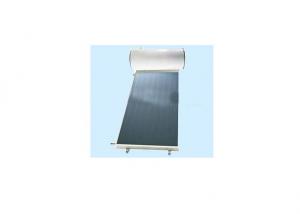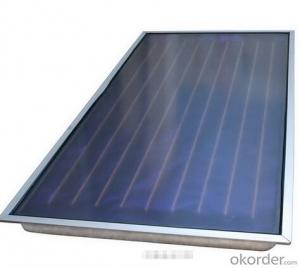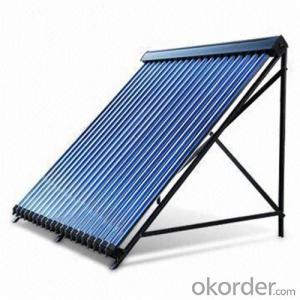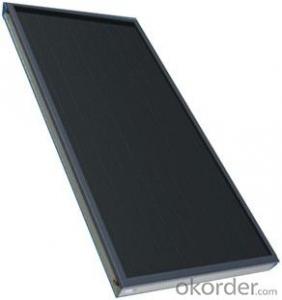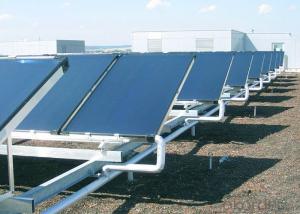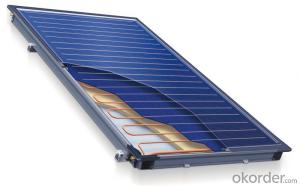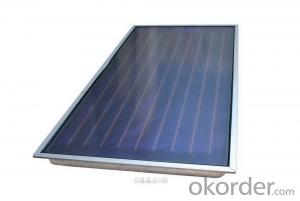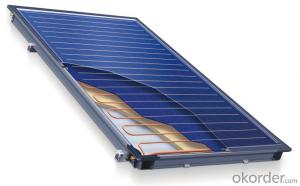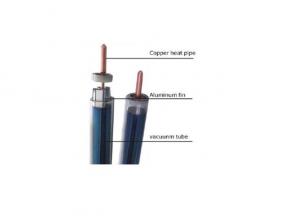Eccentric Heat Pipe Vacuum Tube Solar Collector Model SC-HE
- Loading Port:
- Shanghai
- Payment Terms:
- TT OR LC
- Min Order Qty:
- 20 set
- Supply Capability:
- 200 set/month
OKorder Service Pledge
OKorder Financial Service
You Might Also Like
1. Structure of Eccentric Heat Pipe Vacuum Tube Solar Collector Model SC-HE
This product is composed of the following parts:
1 Manifold 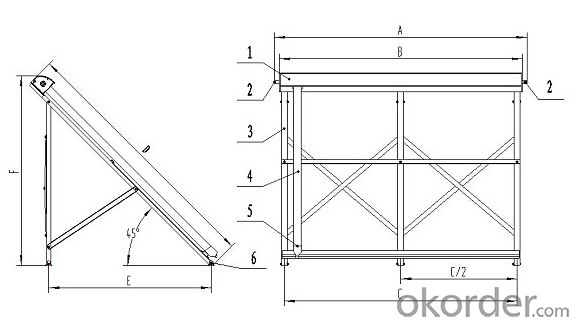
2 Collector Joint
3 All aluminum alloy shell and frame
4 All Glass Vacuum Tube , with reflection mirror sealed in
5 Tube Holder
6 Wind Feet
2. Main Features of Eccentric Heat Pipe Vacuum Tube Solar Collector Model SC-HE
Double ratio of light concentration, the temperature inside the tube is 30% higher than the normal tubes.
Superconducting copper heat pipe and large heat transfer area of the condensing end with high power of heat transfer and fast speed of start working.
The reflection mirror can avoid the effects from external environment and ensure that the mirror reflectivity is not reduced.
All aluminum alloy shell and frame with oxidation and coating anti-corrosion surface, corrosion resistance, easy to be installed.
The thermal insulation layer with rock wool/glass wool that can resistant high temperature, compression molding, high density, small coefficient of thermal conductivity.
Copper pipe with high purity and quality, pressure and corrosion resistance, can stand 1MPa.The gravity heat pipe transfers heat by one way, high heat collecting efficiency but low heat lost.
3. Eccentric Heat Pipe Vacuum Tube Solar Collector Model SC-HE Images
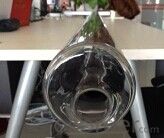
4. Eccentric Heat Pipe Vacuum Tube Solar Collector Model SC-HE Specifications
Model | SC-HCM-10 | SC-HCM-15 | SC-HCM-18 | SC-HCM-20 | SC-HCM-24 | SC-HCM-25 | SC-HCM-30 |
Tube Qty(pcs) | 10 | 15 | 18 | 20 | 24 | 25 | 30 |
Tube Pitch(㎜) | 90 | 90 | 90 | 90 | 90 | 90 | 90 |
Tube Diameter/ Length(㎜) | φ70/2000 | φ70/2000 | φ70/2000 | φ70/2000 | φ70/2000 | φ70/2000 | φ70/2000 |
Vacuum Tube Material | high borosilicate glass 3.3 | high borosilicate glass 3.3 | high borosilicate glass 3.3 | high borosilicate glass 3.3 | high borosilicate glass 3.3 | high borosilicate glass 3.3 | high borosilicate glass 3.3 |
Thickness of Inner Tube/Outer Tube(㎜) | 1.6/2.0 | 1.6/2.0 | 1.6/2.0 | 1.6/2.0 | 1.6/2.0 | 1.6/2.0 | 1.6/2.0 |
Condensator Diameter/ Length(㎜) | φ14/1900 | φ14/1900 | φ14/1900 | φ14/1900 | φ14/1900 | φ14/1900 | φ14/1900 |
Heat Pipe Material / Thickness(㎜) | Copper tp2/0.6 | Copper tp2/0.6 | Copper tp2/0.6 | Copper tp2/0.6 | Copper tp2/0.6 | Copper tp2/0.6 | Copper tp2/0.6 |
Copper Pipe Diameter/ Thickness | φ35/1.0 | φ35/1.0 | φ35/1.0 | φ35/1.0 | φ35/1.0 | φ35/1.0 | φ35/1.0 |
Joint Specification | φ22 Or 3/4″ | φ22 Or 3/4″ | φ22 Or 3/4″ | φ22 Or 3/4″ | φ22 Or 3/4″ | φ22 Or 3/4″ | φ22 Or 3/4″ |
Insulation Material/ Thickness(㎜) | Rock Wool/40 | Rock Wool /40 | Rock Wool /40 | Rock Wool/40 | Rock Wool /40 | Rock Wool /40 | Rock Wool /40 |
Rated Pressure(MPa) | 0.6 | 0.6 | 0.6 | 0.6 | 0.6 | 0.6 | 0.6 |
Working Temperature(℃) | <120 | <120 | <120 | <120 | <120 | <120 | <120 |
Capacity(L) | 0.89 | 1.26 | 1.48 | 1.63 | 1.93 | 2.00 | 2.37 |
Collecting Area(㎡) | 1.37 | 2.05 | 2.46 | 2.73 | 3.28 | 3.41 | 4.10 |
Gross Area(㎡) | 2.01 | 2.98 | 3.56 | 3.95 | 4.72 | 4.91 | 5.88 |
Referral Traffic(L/min) | 1.06 | 1.49 | 1.79 | 2.0 | 2.4 | 2.5 | 3.0 |
Pressure Drop(Pa) | 16.24 | 41.4 | 63.4 | 81.7 | 127.2 | 140.1 | 219.8 |
Intercept Efficiencyη0 | 0.77 | 0.77 | 0.77 | 0.77 | 0.77 | 0.77 | 0.77 |
Heat Loss Coefficient a W/㎡℃ | 1.9 | 1.9 | 1.9 | 1.9 | 1.9 | 1.9 | 1.9 |
Powe(W)1000W/㎡Irradiation | 744 | 1044 | 1256 | 1398 | 1681 | 1748 | 2098 |
40.25 | 52.75 | 61.75 | 66.75 | 81.00 | 85.35 | 100.70 | |
a (㎜) | 1115 | 1615 | 1915 | 2115 | 2515 | 2615 | 3115 |
b (㎜) | 1025 | 1525 | 1825 | 2025 | 2425 | 2525 | 3025 |
c (㎜) | 950 | 1450 | 1750 | 1950 | 2350 | 2450 | 2950 |
c/2 (㎜) | —— | —— | 875 | 975 | 1175 | 1225 | 1475 |
d (㎜) | 2150 | 2150 | 2150 | 2150 | 2150 | 2150 | 2150 |
e (㎜) | 1375 | 1240 | 1240 | 1240 | 1240 | 1240 | 1240 |
f (㎜) | 1590 | 1590 | 1590 | 1590 | 1590 | 1590 | 1590 |
5. FAQ
1. Can the solar collector be used in cold condition?
Re: This solar collectors can be used in temperatures as low as -30℃, although performance is greatly reduced in such extreme conditions. Good heat output is still achieved in mild sub-zero conditions.
2. What maintenance of the solar collector is required?
Re: Under normal circumstances no maintenance of the system is required. Due to the shape of the tubes regular rainfall and wind should keep the tubes clean. Should a tube even be broken it should be replaced. This, however, is an inexpensive and easy job. Any "handy" person can install a new tube (while adhering to local health and safety regulations). Our solar collectors can operate with several broken tubes, however the efficiency will be reduced slightly.
- Q:The introduction of flat solar water heater
- The collector and the water tank are separated from each other. The collector can be flexibly installed on the roof, skylight, balcony or wall, and it is not limited by the position and has reached the perfect combination with the high-rise building and the environment.
- Q:Can solar collectors be used for heating stadiums?
- Yes, solar collectors can be used for heating stadiums. By harnessing the sun's energy, solar collectors can generate heat that can be used to warm up large spaces like stadiums. This can be achieved through various solar heating systems, such as solar thermal collectors or solar air heating systems.
- Q:Do solar collectors require direct sunlight to work?
- Yes, solar collectors require direct sunlight to work efficiently. While they can still generate some electricity or heat on cloudy days, direct sunlight is necessary for optimal performance and maximum energy output.
- Q:What is the principle of thermal conversion of solar collectors?
- The basic principle is to collect solar radiation can use the greenhouse effect to heat objects and access to heat, such as plastic film, greenhouses, greenhouses and so on. At present, there are two kinds of solar energy collection devices: one is a flat type collector, such as solar water heaters, etc .; the other is a focus collector, such as reflective solar cookers, high temperature solar furnace.
- Q:Are there any size limitations for solar collectors?
- Yes, there are size limitations for solar collectors. The size of a solar collector is typically determined by factors such as available space, energy requirements, and the efficiency of the system. However, larger collectors can generally generate more energy, provided that the site and infrastructure can accommodate them.
- Q:Can solar collectors be used for heating snow melting systems?
- Yes, solar collectors can be used for heating snow melting systems. Solar thermal collectors can absorb sunlight and convert it into heat, which can then be used to melt snow in a snow melting system. This can provide a sustainable and environmentally friendly way to heat and melt snow on surfaces such as driveways, walkways, and rooftops.
- Q:Can solar collectors be used for heating residential complexes?
- Yes, solar collectors can be used for heating residential complexes. Solar collectors, such as solar thermal panels, can capture the sun's energy and convert it into heat that can be used for heating water and space heating in residential complexes. This energy-efficient and sustainable solution can help reduce reliance on traditional heating systems, lower energy costs, and contribute to a greener environment.
- Q:Can solar collectors be used for generating electricity on amusement parks?
- Yes, solar collectors can certainly be used for generating electricity on amusement parks. Solar collectors, commonly known as solar panels, are designed to convert sunlight into electricity through the photovoltaic effect. Amusement parks are often situated in areas with ample sunlight, making them ideal for harnessing solar energy. By installing solar panels on the rooftops, parking lots, or open areas of an amusement park, it is possible to generate a significant amount of electricity to power various attractions, lighting systems, and other facilities within the park. Solar energy can be used during the park's operating hours, thereby reducing dependence on traditional electricity sources and lowering energy costs. Moreover, amusement parks typically have large surface areas available for solar panel installation, which can accommodate a substantial number of panels. This allows for a higher electricity generation capacity, enabling the park to potentially meet a significant portion of its energy needs from clean and renewable sources. In addition to the environmental benefits, using solar collectors for electricity generation can also serve as a valuable educational opportunity. By showcasing the solar panels and educating visitors about the benefits of renewable energy, amusement parks can raise awareness and promote sustainable practices among their visitors. Overall, the use of solar collectors for electricity generation in amusement parks is not only feasible but also offers numerous advantages, including reduced carbon emissions, cost savings, and educational opportunities.
- Q:Can solar collectors be used in amusement parks?
- Yes, solar collectors can be used in amusement parks. They can be used to generate clean and renewable energy to power various rides, attractions, and facilities in the park. Solar collectors can help reduce the park's carbon footprint, lower energy costs, and showcase a commitment to sustainability.
- Q:Can solar collectors be used to generate steam for industrial processes?
- Yes, solar collectors can be used to generate steam for industrial processes. Solar thermal systems, such as concentrated solar power (CSP) plants, use mirrors or lenses to concentrate sunlight onto a receiver, which then heats up a fluid such as water or oil to generate steam. This steam can be utilized in various industrial applications, including power generation, heating, and industrial processes that require high-temperature steam.
1. Manufacturer Overview |
|
|---|---|
| Location | |
| Year Established | |
| Annual Output Value | |
| Main Markets | |
| Company Certifications | |
2. Manufacturer Certificates |
|
|---|---|
| a) Certification Name | |
| Range | |
| Reference | |
| Validity Period | |
3. Manufacturer Capability |
|
|---|---|
| a)Trade Capacity | |
| Nearest Port | |
| Export Percentage | |
| No.of Employees in Trade Department | |
| Language Spoken: | |
| b)Factory Information | |
| Factory Size: | |
| No. of Production Lines | |
| Contract Manufacturing | |
| Product Price Range | |
Send your message to us
Eccentric Heat Pipe Vacuum Tube Solar Collector Model SC-HE
- Loading Port:
- Shanghai
- Payment Terms:
- TT OR LC
- Min Order Qty:
- 20 set
- Supply Capability:
- 200 set/month
OKorder Service Pledge
OKorder Financial Service
Similar products
New products
Hot products
Hot Searches






